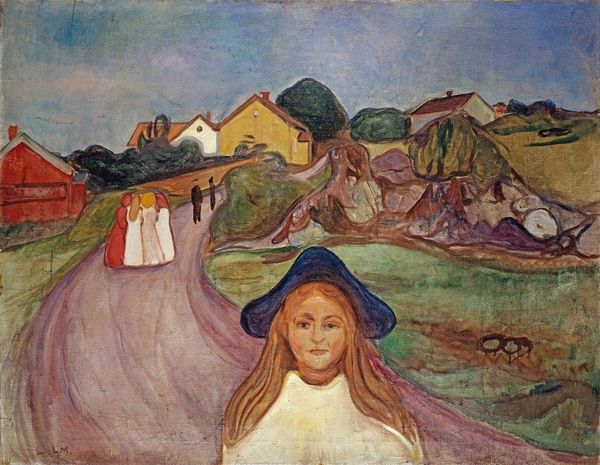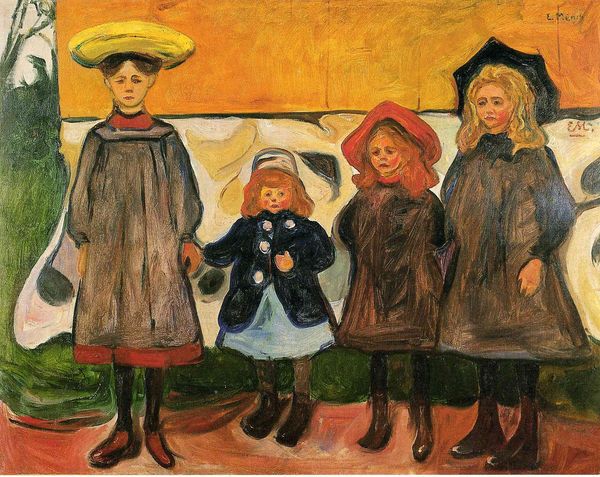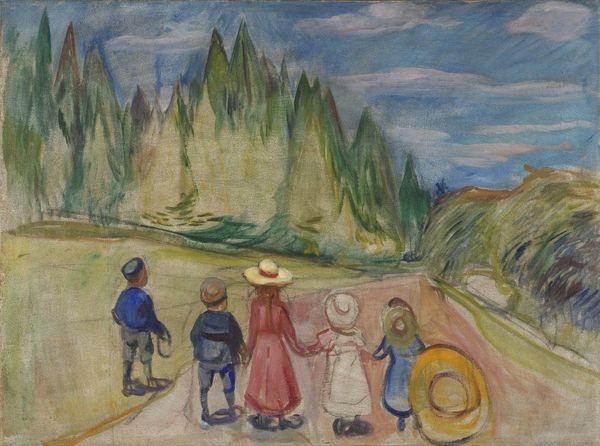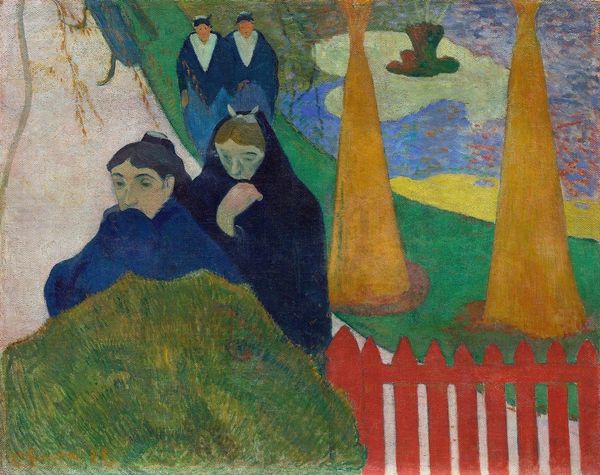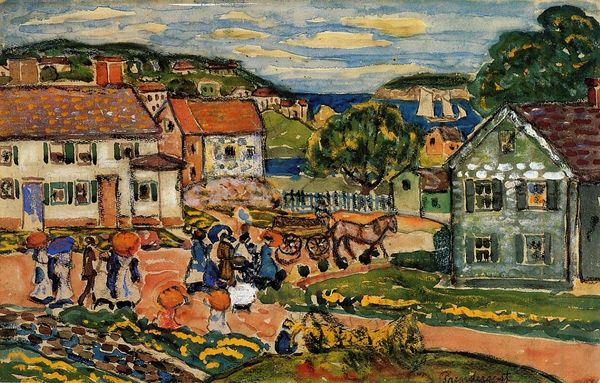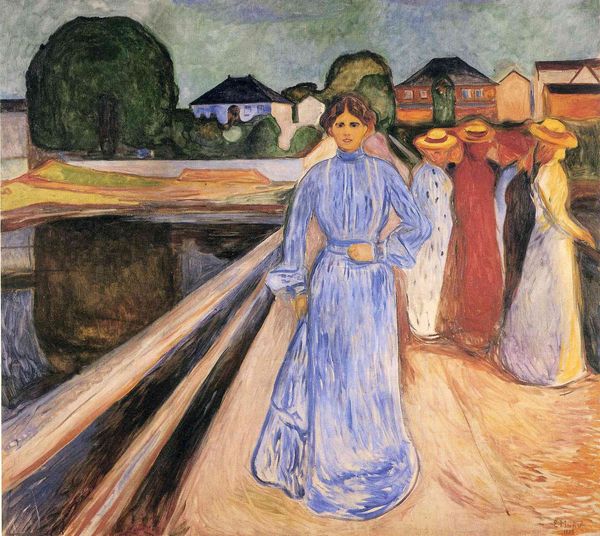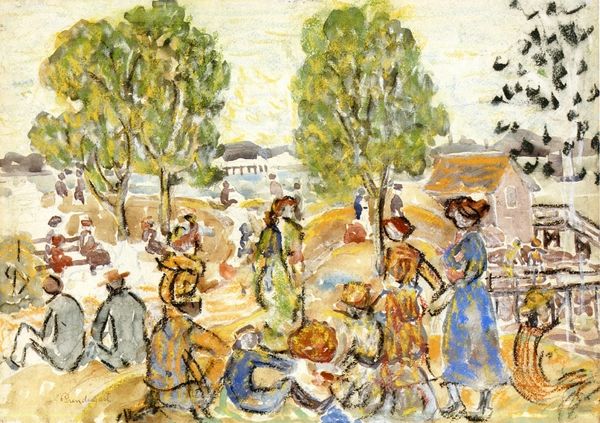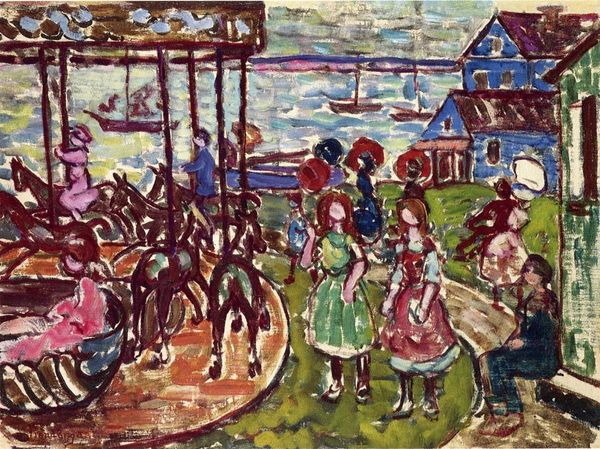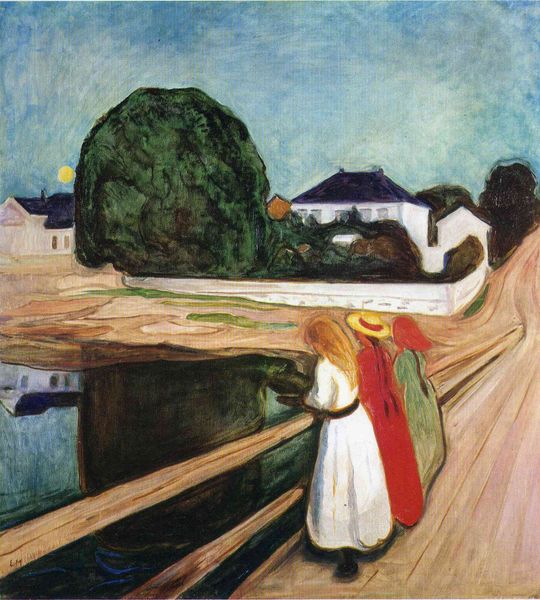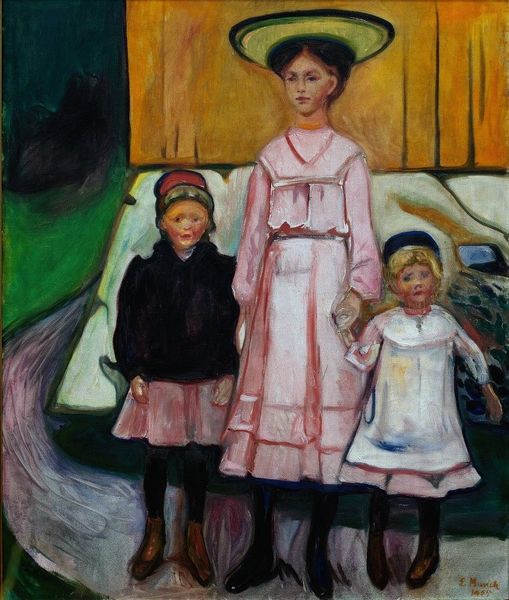
Dimensions: 74.5 x 89 cm
Copyright: Public domain
Editor: So, this is Edvard Munch's "Street in Asgardstrand" from 1902, painted with oils. What strikes me is the children. There’s a group playing by the wall, almost chaotic, then that solitary girl in the foreground… she seems disconnected, lost in her own world. What do you make of it? Curator: The street becomes a stage, doesn’t it? Look how Munch places that lone girl. Notice the contrast; her stillness against the swirling lines and loose brushwork that define the rest of the scene. Does she not appear caught between childhood’s fleeting innocence and the encroaching awareness of the adult world? Editor: Definitely. It’s like she’s the only one really seeing us, the viewers. The others are just part of the landscape. Curator: Indeed. And what might she be seeing? Or perhaps, more accurately, *feeling*? Munch often uses figures to convey profound emotional states. Consider the symbol of the road itself - a passage. Is this Asgardstrand street not also a journey through psychological space? A cultural memory of sorts? Editor: A journey...I guess that solitary figure does bring a deeper level of contemplation to what seems like just an ordinary scene. Like she represents our own inner journey? Curator: Precisely. She is not simply a girl on a street, but an emblem. Munch offers us a symbol, a touchstone. Do you not see how our own individual paths are reflected here? The street is ordinary, but made significant with this girl; through her we reflect on life. Editor: I didn't realize how loaded such a simple composition could be. I'll definitely look at Munch differently from now on. Curator: Yes, looking for cultural symbolism and psychological context helps open the artwork to diverse interpretations!
Comments
No comments
Be the first to comment and join the conversation on the ultimate creative platform.

